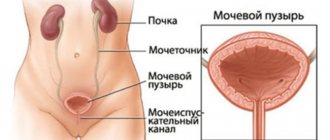Home / Papillomas
Expectant mothers are interested in the question of whether there is a connection between such concepts as ureaplasma and infertility in women. Indeed, in accordance with the statistical data provided, almost 55% of couples who decided to be examined for infertility have mycoplasma pathogens detected in their bodies. Therefore, it is quite natural to ask whether ureaplasma can cause infertility.
Essence, causes and symptoms of infection
Before answering this question, it is necessary to understand what ureaplasmosis is, what are its causes and symptoms. By this medical term, doctors mean a sexually transmitted infection. A person, regardless of gender, can be infected through sexual contact or at the time of birth when passing through the mother's birth canal. For a long time, the infection may not manifest itself in any way and makes itself felt only when the concentration of ureaplasma begins to exceed the maximum permissible values.
It should be noted that the signs that are observed with this disease are extensive and not specific. For this reason, it can be confused with a number of other sexually transmitted infections. In latent form and at an early stage of development, there are no symptoms of infection at all. In later stages of development, women experience the following symptoms:
- the appearance of cloudy discharge with a repulsive odor;
- cutting pain in the lower abdomen;
- feeling of discomfort during sexual intercourse;
- burning sensation in the vagina and labia.
If the infection occurs through oral sex, the patient develops a specific sore throat, in which purulent plaque appears on the tonsils.
If the infection is ignored and not treated, it becomes chronic. In this case, the likelihood of a complete cure for the patient is very doubtful. Moreover, during periods of exacerbation of the chronic form of pathology in women, the following are quite often observed:
- intoxication syndrome;
- fever;
- unbearable cutting pain in the lower abdomen.
The chronic form of the infection can cause infertility in women as a result of adhesions in the uterus. Also, ureaplasmosis quite often causes miscarriages and severe premature births.
In addition to problems with reproductive function, the infection can provoke the development of:
- cystitis;
- endometritis;
- pyelonephritis;
- a number of other pathologies in the organs of the genitourinary system.
Which doctor should I go to?
When asking people which doctor treats ureaplasmosis, one could hear many versions. For example, gynecologist, urologist and pediatrician are the most common answers. But among them, not a single one is true.
Most likely, these answers are explained by the fact that ureaplasmosis is a disease that most often occurs in a latent form and is first detected during a preventive examination of women by a gynecologist, men by a urologist, and children by a pediatrician.
And if there is no specialized specialist on staff, they are used for treatment, which is quite common in hospitals in small provincial towns and villages.
So what kind of doctor do you need? Ureaplasma, mycoplasma, chlamydia, herpes and other sexually transmitted infections are treated by a dermatovenerologist. Many people believe that this specialist only deals with skin problems and sexually transmitted diseases (such as syphilis, clap). But this is a mistaken opinion.
Therefore, the confident answer to which doctor treats ureaplasmosis is a dermatovenerologist .
Infection and pregnancy
Ureaplasma poses a threat to the health of all representatives of the fair sex without exception, not to mention those who would like to become mothers. After all, the reproductive functions of an infected woman deteriorate significantly. The possibility of intrauterine infection of the fetus cannot be ruled out.
If a woman begins to show the above signs of the disease, then there is no need to postpone a visit to the doctor. Indeed, very often the cause of infertility (both female and male) lies precisely in this infection. And in this case, not only the inability to get pregnant should be scary, but also the chronic form of the pathology. Therefore, a visit to the doctor is simply mandatory both for couples planning a pregnancy and for those who have already become pregnant. In order to give birth to a healthy baby, the parents must also be healthy. As you know, in order to cure an infection, it is necessary to take antibiotic drugs, which will negatively affect the health of the unborn child.
At the same time, the development of inflammatory processes in the female body, provoked by ureaplasma, in the postpartum period contributes to inflammation of the uterine appendages, which is much more difficult to treat, especially in a chronic form.
If we exclude the possibility of spontaneous abortions and miscarriages, then the infection cannot affect the fetus itself, since it is protected by the placenta.
The situation is completely different at the birth of a baby. If a child is infected during childbirth, he will suffer damage to the nasopharynx and reproductive organs. To eliminate this risk, infected expectant mothers are prescribed antibiotics, but only after the 22nd week of pregnancy, when the drug may not have such a detrimental effect on the baby’s health. To take antibiotics, the doctor usually adds immunostimulants, dietary nutrition and vitamins.
Why does infertility occur?
It should be noted that at present it has become relevant due to the inattentive attitude of future parents to their health. The main cause of female infertility with ureaplasmosis is inflammation of the fallopian tubes, which occurs when the infection becomes chronic.
If a woman constantly puts off visiting a doctor, leads an unhealthy lifestyle and experiences constant stress, then in the future this will result in a lot of problems and complications for her in the form of infertility, ectopic pregnancy or spontaneous abortion. In addition, a woman risks not only her health, but also the health of her sexual partner.
Thus, every person, regardless of gender, should be attentive to and take care of their health throughout their lives. Otherwise, this could have very serious consequences in the future.
Is pregnancy possible with ureaplasma? This disease is widespread, and the problem of the connection between ureaplasma and conception worries many women who want to have a child. After all traces of these pathological microorganisms are removed, half of the patients who previously could not become pregnant with ureaplasma become pregnant, unless other disorders are found.
Conception during infection is possible if it does not cause inflammatory diseases. But first it is better to get rid of ureaplasma. It will be easier to cure the infection before pregnancy: the range of medications approved for use by pregnant women is too narrow.
Ureaplasma can cause infertility if it has acquired an advanced form. Endometritis, cervical erosion, endometrial cancer is an incomplete list of consequences that the chronic form of the disease causes along with other sexually transmitted infections. Ureaplasma does not always cause disease and does not always need to be treated. But if this pathogen causes discomfort and pain, treatment should be started immediately.
Factors of occurrence
Ureaplasmas are microorganisms that are often sexually transmitted. There are cases of intrauterine infection - the infection is transmitted from mother to child. These bacteria are able to reside in the body of a healthy person without causing disease or discomfort.
The risk of infection increases as a woman's number of sexual partners increases. In most cases, you can become infected through sexual contact. The infection can also be transmitted to the child during pregnancy and childbirth.
Treatment during pregnancy
Screening pregnant women for ureaplasmosis is mandatory. If this disease is discovered, it requires immediate treatment, otherwise the disease will cause serious consequences:
- abortion;
- premature birth;
- organic lesions of the unborn child;
- infection of the uterus and amniotic membranes.
Treatment is prescribed as soon as an accurate diagnosis has been established. During pregnancy, the use of many medications is prohibited, so therapy becomes a little more complicated. The gynecologist will give recommendations on how to treat the emerging disease. The basic treatment regimen includes the following medications against ureaplasma:
- Josamycin (Vilprafen) is approved for use during pregnancy, but caution should be exercised. Usually, it is recommended for women after the 20th week of pregnancy, so that the antibiotic does not harm the formation of the fetus;
- Suppositories are allowed, as they have a local effect on the infection and do not affect the development of the baby;
- medicines that restore intestinal microflora (Linex, Laktovit);
- acceptable vitamin complex.
After the main therapy, it is necessary to undergo tests that help control the disease. For this purpose, laboratory tests, culture (performed 7 days after completion of treatment) or PCR (performed 14 days after therapy) are recommended.
Details >>
Consequences
The uncontrolled proliferation of bacteria in the genital mucosa contributes to the development of the inflammatory process of the cervix, which is the cause of infertility. Ureaplasma is an excellent breeding ground for other infections. Severe consequences arise after the addition of sexually transmitted infections, gonorrhea and chlamydia.
In the absence of proper treatment, ureaplasmosis can become chronic and periodically worsen after colds, stress, and excessive physical exertion. The infection can cause diseases of the genitourinary system: endometritis, urolithiasis and other ailments. May cause miscarriage and premature birth.
Ureaplasma has an important feature: it exists for a long time in epithelial cells. In the chronic form, cervical erosion may develop, which will prevent the fertilization of the egg. Severe inflammation contributes to the formation of adhesions in the fallopian tubes. Adhesions prevent sperm from reaching the eggs. More than half of women with infertility problems cannot conceive due to adhesions in the fallopian tubes. Ureaplasmosis can cause epithelial cancer, which quickly metastasizes.
With ureaplasmosis, endometriosis can develop. The endometrium is the mucous membrane lining the uterus. But with the disease, it spreads beyond the uterus into the fallopian tubes, bladder and other organs. The endometrium continues to perform its functions even when it is far from the uterus: during menstruation, endometrial foci bleed. Blood accumulates, the lesion enlarges, and the contents decompose. Endometriosis manifests itself as severe pain during menstruation, in the pelvic area, and uterine bleeding. The formation of adhesions is possible, so endometriosis can be a cause of infertility.
Endometritis, an inflammation of the inner layer of the uterus, can also develop. The thickness of the endometrium (the inner layer of the uterus) should not exceed half a centimeter. But endometritis contributes to its growth and dysplasia (disturbs the structure of the layer). These conditions are classified as precancerous, and without treatment they are dangerous by developing a malignant form. Endometritis is also dangerous due to other complications: the spread of infection can affect the tubes and ovaries, forming adhesions and cysts. Possible development of ectopic pregnancy, infertility, peritonitis and sepsis.
Acute endometritis is manifested by weakness, malaise, fever, and pain in the lower abdomen. The discharge during the disease is profuse and has an unpleasant odor. Chronic endometritis is characterized by menstrual irregularities, light discharge, and lower back pain. The egg is unable to attach to the lining of the uterus, and the woman has no chance of conceiving.
Ureaplasma can cause salpingitis and oophoritis. The diseases are characterized by inflammation of the ovaries and tubes, accompanied by girdle pain down the front. Usually it is most noticeable in the lower back, lower abdomen. The consequences are adhesions, tubal obstruction, ovarian cysts. Ureaplasma itself is not capable of leading to such complications. Only in combination with mycoplasmas and other infections.
But ureaplasma is not only a problem for women. Bacteria cause harmful changes in a man's seminal fluid, contributing to:
- reduction in the number and motility of sperm;
- the occurrence of infertility.
The infection can also cause prostatitis.
Diagnostics
Etiological diagnosis of ureaplasma can be performed in different ways. But in practice, PCR is most often used. This is due to the fact that this method is the most sensitive, accurate, and gives results quickly. They can be obtained in quantitative terms.
Since ureaplasma is a conditionally pathogenic microorganism, the number of bacteria in the clinical material makes it possible to assess the role of the bacterium in the occurrence of the inflammatory process. The pathogenicity threshold is considered to be 10 to 4 DNA copies per ml. With such a concentration of ureaplasma, the risk of an inflammatory process in the urogenital system is 3 times higher.
The detection of ureaplasma in patients with infertility does not mean that these bacteria are the cause of impaired fertility. Therefore, it is important to undergo a full examination. The following may indicate that ureaplasmosis could cause infertility:
- obstruction of the fallopian tubes;
- adhesions in the uterus or abdominal cavity;
- absence or low sperm content in the ejaculate;
- all this against the background of normal hormone levels, in the absence of other urogenital infections - both current and those suffered in the past.
The presence of ureaplasma DNA in a smear from the genitourinary system in the absence of signs of inflammation of the urogenital tract does not give grounds to consider this bacterium as the cause of infertility in this particular case and is not considered an indication for antibiotic therapy.
Symptoms in women
Ureaplasma in many women is characterized by a long asymptomatic course. They are not bothered by menstrual irregularities, pain, itching, or pathological discharge.
With a decrease in immunity and exposure to other factors, signs of infection appear:
- greenish vaginal discharge indicates the onset of an inflammatory process;
- cutting pain in the lower abdomen;
- frequent and painful urination;
- discomfort during sexual intercourse;
- temperature increase;
- The oral-genital route of infection sometimes manifests itself as a sore throat.
What is important to know
Is it necessary to treat ureaplasma in women?
According to most doctors, ureaplasma in women does not require treatment. The appearance of these bacteria does not affect the body in any way if the immune system is strong. The presence of ureaplasma does not lead to infertility, the appearance of sexually transmitted diseases, or problems in bearing an unborn child. Moreover, if this disease is not accompanied by symptoms that bring discomfort. A course of antibiotic treatment is more harmful.
If the body is weakened, the result of the disease may be just the opposite, so you should consult a doctor.
How to treat chronic ureaplasmosis in men
The chronic form is more difficult to treat than the initial stage of the disease. Antibiotics are prescribed to get rid of microorganisms that cause a lot of discomfort and interfere with leading a full life. For a quick effect, the use of uroantiseptics is recommended. Common antibacterial drugs for male ureaplasmosis are Azithromycin, Erythromycin, Doxycycline.
How long does it take to treat
The duration of treatment for this microorganism is determined by the attending physician, based on the individual characteristics of your body. When prescribing a course of treatment, a dermatovenerologist takes into account chronic diseases, relapses, pregnancy, and taking other medications. An experienced specialist is able to cure ureaplasma in a short time. The average course involves 10–14 days of taking antibiotics. In some cases, a longer period of treatment is required.
Which doctor
Ureaplasma is a disease that is sexually transmitted, therefore, just like chlamydia, genital herpes, mycoplasma should be treated by a dermatovenerologist. If symptoms such as discharge, burning, pain, cramping, or menstrual irregularities appear, be sure to consult a specialist. It is this doctor who will conduct a diagnosis, based on the results of which he will prescribe treatment.
Correct therapy can only be prescribed by a highly specialized doctor - a dermatovenerologist. It is imperative to take into account individual characteristics: pregnancy, the presence of other infectious diseases, re-infection with ureaplasma bacteria. If, apart from ureaplasmosis, nothing else is found and there are no symptoms of the disease, then it is recommended not to engage in treatment. If other pathogens are detected, it is necessary to take into account their symptoms, the nature of the disease and prescribe antibiotics, vaginal suppositories and probiotics.
Symptoms in men
In men, long-term asymptomatic progression is also possible. Without suspecting the presence of infection, a man can transmit it to his sexual partner. Usually the first signs are mild. Men complain of a burning sensation in the urethra when urinating and mucous discharge.
Without treatment, ureaplasma causes:
- inflammatory diseases of the urethra;
- diseases of the epididymis;
- prostatitis;
- difficult and painful urination;
- discomfort in the perineum;
- erectile dysfunction;
- infertility.
Ureaplasmosis - symptoms
To treat ureaplasma, you must tell your doctor about the disturbing symptoms. You should not withhold important information, even if you are embarrassed to talk about your symptoms. Get over yourself. The doctor needs to get the whole picture of the disease in order to prescribe treatment that can work as quickly as possible. Clinical picture of ureaplasmosis:
- burning when urinating;
- copious discharge from the genital tract with a yellowish tint; after sexual intercourse, bloody streaks predominate in the mucus;
- painful sensations appear in the lower abdomen;
- pain when urinating and during sexual intercourse;
- unpleasant smell.
A cutting pain syndrome that spreads to a significant part of the abdomen indicates the presence of an inflammatory process in the uterus and appendages, which was provoked by ureaplasma. Discharge from the genital tract is abnormal in consistency and quantity. Women often go to the toilet “smallly” and experience discomfort. When the bladder is full, an intimate itching and burning sensation is felt. Patients note a clear relationship between the appearance of symptoms and critical days and stressful situations. Upon oral contact with someone infected with ureaplasma, signs characteristic of purulent tonsillitis appear. The throat begins to hurt, the sputum contains an admixture of pus, a cough appears, nasal congestion without secretion of secretory mucus.
Attention! Left untreated will lead to complications and inability to conceive.
Pregnant women should take this pathology seriously. A bacterial infection can cause fetal death, premature birth, and spontaneous abortion. Ureaplasmosis leads to the formation of adhesions in the uterine cavity and ectopic pregnancy.
Treatment
Ureaplasma is subject to treatment if:
- is the only cause of female or male infertility;
- the inflammatory process in the organs of the genitourinary system has been confirmed;
- Surgery is required to prevent the infection from spreading beyond the affected area.
Treatment is aimed at getting rid of the conditions that allow microorganisms to multiply. Conditions that reduce immune defense are eliminated, and a powerful effect on infection occurs. Bacterial culture determines the sensitivity of the pathogenic microorganism to various antibacterial drugs, which helps the specialist choose effective treatment.
Typically, therapy begins with antibiotics, to which not only ureaplasma is susceptible, but also chlamydia, mycoplasma, and gonorrhea pathogens. In addition to tablets, doctors can also prescribe local treatment: medications are injected into the urethra, women are prescribed vaginal or rectal suppositories. If a man has prostatitis, a prostate massage is necessary.
If the form is chronic, doctors usually prescribe immunomodulators to improve the functioning of the immune system. It is recommended to exclude hot spices, alcoholic drinks, fried foods from the diet and limit salt intake. To achieve a positive result and to avoid relapse, it is necessary to carry out treatment for both partners and abstain from sexual activity for the duration of therapy.
If doctors find ureaplasma in the body, which causes pain and inflammation, it must be treated. An advanced form can lead to dangerous diseases and infertility not only in men, but also in women.
Treatment regimen
Ideally, before treating ureaplasmosis in women, a bacterial sensitivity test is performed. The attending physician will prescribe a suitable drug, based on its results.
The most effective courses to choose from:
- Azithromycin (Sumamed, Azitral) 250 mg once a day for 6 days;
- Josamycin (Vilprafen, Vilprafen Solutab) 500 mg 3 times a day, between meals, 10 days;
- Doxycycline. One of the most effective drugs. Completely absorbed into the gastrointestinal tract. On the first day, two hundred milligrams of the drug are taken. On the second day, the dose is reduced to one hundred milligrams. The intake is carried out after eating. The full course of therapy is fourteen days;
- Macropen. Adults and children need to take one tablet of the drug three times a day. If the child weighs less than thirty kilograms, it is necessary to calculate the dose individually, based on the fact that per kilogram of weight you need to take from twenty to forty mcg of the drug. The course of admission is ten days;
- Erythromycin. Taken twice a day (five hundred milligrams) for ten days. Another treatment regimen is two hundred and fifty milligrams four times a day for one week;
- Clarithromycin. The dosage rate is two hundred and fifty milligrams twice a day. The course of treatment is fourteen days;
- Ofloxacin. The dosage depends on the specific doctor's prescription. Can only be taken by persons over eighteen years of age. The course of treatment is ten days.
It is better to start with those to which chlamydia, mycoplasma and gonorrhea pathogens are also susceptible - from the group of macrolides. Midecamycin and josamycin have virtually no side effects and are well tolerated by patients. Azithromycin, clarithromycin penetrate cell membranes and destroy intracellular parasites (Neisseria, chlamydia), do not disintegrate in the acidic environment of the stomach. Josamycin is suitable for the treatment of pregnant women, including during short periods (in the first trimester), more >>
If a course of tablet therapy is ineffective, or the patient suffers from stomach, liver or kidney diseases that make it impossible to take antibiotics in tablet form, the doctor may prescribe drugs in the form of injections. In addition, injections are used for advanced forms of the disease. Ureaplasmosis is treated with the following drugs:
- Tsiprolet. A single dose is from two hundred to four hundred milligrams, depending on the severity of the disease. The product must be administered twice a day. The course of treatment is from seven to fourteen days;
- Cycloferon. A single dose is two hundred and fifty milligrams. The drug is administered once a day and applied every other day. After administering ten injections, it is necessary to take a break and repeat the course of therapy after ten days.
Why does infertility occur?
It should be noted that at present it has become relevant due to the inattentive attitude of future parents to their health. The main cause of female infertility with ureaplasmosis is inflammation of the fallopian tubes, which occurs when the infection becomes chronic.
If a woman constantly puts off visiting a doctor, leads an unhealthy lifestyle and experiences constant stress, then in the future this will result in a lot of problems and complications for her in the form of infertility, ectopic pregnancy or spontaneous abortion. In addition, a woman risks not only her health, but also the health of her sexual partner.
Thus, every person, regardless of gender, should be attentive to and take care of their health throughout their lives. Otherwise, this could have very serious consequences in the future.
How to treat with folk remedies
You can prepare an infusion, which will need to be taken 2 times a day, 1/2 cup before meals. For this you will need: birch buds, Leuzea root, burnet root, wild rosemary herb, string, thyme, yarrow - take in equal quantities and prepare 1 tbsp. l. collected in crushed form.
Pour 200 ml of boiling water over the resulting mixture and let it brew for 9 hours. It should be taken into account that there may be an allergy to herbs, so use garlic for treatment: eat 3-4 cloves a day, it kills infection and improves immunity.
Only a doctor can decide how to treat ureaplasma in women at home, which tablets and suppositories to use, based on the results of specific tests. Self-medication is unacceptable: it can lead to various complications, including infertility.
Ureaplasma in children
I really want to protect children from STIs, but ureaplasma sometimes overtakes them too. Most often, ureaplasmosis disease in children is detected immediately after birth if they were infected by their pregnant mother.
Signs of this disease are insufficient weight of the newborn. To quickly treat an infant, an accurate diagnosis is necessary.
In this case, laboratory examination of the mother’s placenta is effective. The sample is cultured to determine bacteria.
The ELISA reaction in a newborn may not show the presence of antibodies in the blood.
In school-age children, the infectious disease ureaplasma primarily affects the respiratory tract and is extremely rare. There have been only isolated cases of ureaplasma virus affecting the testicles in boys.
Treatment of such diseases is carried out only with the use of antibiotics and under the strict supervision of a pediatrician, so it is considered extremely unwise to recommend any specific drug for children in absentia.
Causes of the disease
Positive soil for the proliferation of ureaplasmosis in women and the rate of spread of microbes in the genitourinary system is based on the following reasons:
- significant changes in the immune system (severe weakening of the immune system);
- carrying a child or terminating a pregnancy;
- chronic infectious diseases;
- hormonal imbalances during menstruation.
Ureaplasmosis in women
The disease ureaplasmosis also occurs in men, but much less frequently than in women. Ureaplasma in men causes urethritis, prostatitis, epididymitis, urinary stones and pyelonephritis.
The presence of small microorganisms of this group in the body causes a low concentration of sperm in semen. Scientists have found that these small microorganisms can attach to sperm.
which affects their mobility.
Research shows that the presence of this virus in a man's semen can lead to a decrease in pregnancy rates in women who have contact with this person.
In women, the presence of ureaplasma may have different symptoms in each specific case. Some of the most common symptoms associated with this bacterium for women include infertility, miscarriage, spontaneous abortion, pelvic pain on the eve of the menstrual cycle, spotting between menstrual cycles, and intrauterine infection ureaplasmosis.
Other less common symptoms also associated with this bacterium include chronic sore throat, gallstones, red, painful, itchy eyes, kidney stones, constant fatigue, blindness when looking at light, frequent headaches and mental confusion.
Infections associated with ureaplasma are contagious and easily spread to another body if the patient coughs in the presence of healthy people or his secretions accidentally touch another person. The recipient becomes infected.
What is ureaplasma parvum and urealiticum
Doctors identify several types of microorganisms that cause significant inflammation of the female organs. One of the species is called ureaplasma urealyticum. The “offshoot” of this species is ureaplasma parvum. Doctors do not distinguish between ureaplasmosis urealiticum in women and its offshoot parvum. These microbes are fought using identical medications; they are characterized by the same symptoms and complications. In most cases, ureaplasma species are combined into the group ureaplasma species.
The course of pregnancy with ureaplasmosis
Ureaplasma poses a threat to the health of all representatives of the fair sex without exception, not to mention those who would like to become mothers. After all, the reproductive functions of an infected woman deteriorate significantly. The possibility of intrauterine infection of the fetus cannot be ruled out.
If a woman begins to show the above signs of the disease, then there is no need to postpone a visit to the doctor. Indeed, very often the cause of infertility (both female and male) lies precisely in this infection.
And in this case, not only the inability to get pregnant should be scary, but also the chronic form of the pathology. Therefore, a visit to the doctor is simply mandatory both for couples planning a pregnancy and for those who have already become pregnant.
In order to give birth to a healthy baby, the parents must also be healthy. As you know, in order to cure an infection, it is necessary to take antibiotic drugs, which will negatively affect the health of the unborn child.
At the same time, the development of inflammatory processes in the female body, provoked by ureaplasma, in the postpartum period contributes to inflammation of the uterine appendages, which is much more difficult to treat, especially in a chronic form.
If we exclude the possibility of spontaneous abortions and miscarriages, then the infection cannot affect the fetus itself, since it is protected by the placenta.
The situation is completely different at the birth of a baby. If a child is infected during childbirth, he will suffer damage to the nasopharynx and reproductive organs.
To eliminate this risk, infected expectant mothers are prescribed antibiotics, but only after the 22nd week of pregnancy, when the drug may not have such a detrimental effect on the baby’s health. To take antibiotics, the doctor usually adds immunostimulants, dietary nutrition and vitamins.
Ureaplasmosis is one of those infections for which a woman should be examined before her intended pregnancy. Even a small amount of ureaplasma in the genitourinary tract of a healthy woman during pregnancy can become active and lead to the development of ureaplasmosis.
At the same time, if ureaplasmosis is first detected during pregnancy, this is not an indication for termination of pregnancy. Correct and timely treatment will help a woman carry and give birth to a healthy baby.
It is believed that ureaplasma does not have a teratogenic effect, i.e. does not cause developmental defects in the child. At the same time, ureaplasmosis can cause miscarriages, premature birth, polyhydramnios and fetoplacental insufficiency - a condition in which the baby lacks oxygen and nutrients.
As for the fetus, during pregnancy infection occurs in the rarest cases, since the fetus is reliably protected by the placenta. However, in about half of the cases, the child becomes infected while passing through the infected birth canal during childbirth. In such cases, ureaplasma is found on the genitals of newborns or in the nasopharynx of infants.
Diagnosis and treatment of ureaplasmosis
Patients who suspect they have ureaplasma should begin diagnosis and subsequent treatment, if necessary, immediately. It is enough to submit a urine sample for testing to a laboratory to determine the presence of ureaplasmosis infection in the body.
Among diagnostic methods in the laboratory, ELISA is distinguished by its effectiveness. When examining the fluid taken for analysis, antibodies to ureaplasma are detected in it when the body is infected.
Under a microscope, the pathogen in the blood can be seen by performing direct immunofluorescence reactions.
The simplest way to detect ureaplasma in the body is a microbiological study, when the contents of the secretions are taken and cultured to determine the culture medium.
Confirmation of the suspected diagnosis and initiation of treatment will prevent more serious spread of the virus and damage to other organs.
A prerequisite for the presence of infection in order to completely get rid of it is treatment of both spouses. Streamlining relationships with sexual partners is also an important preventive step to protect your body. Outside of a monogamous relationship, the risk of getting reinfection into your body becomes much higher.
In addition to drug treatment, the use of bioresonance therapy to combat microorganisms is currently practiced. With the help of the Lidomed-Bio device, the healing effect occurs faster. This method has a reasonable price.
Diagnosis and treatment of ureaplasmosis
The diagnosis of ureaplasmosis is made only when, using cultural analysis, it is revealed that the amount of ureaplasma in the body exceeds the norms acceptable for a healthy person. In this case, ureaplasmosis requires treatment. Preventive treatment of ureaplasmosis with a small number of ureaplasmas is prescribed only to women planning pregnancy.
Treatment is usually carried out on an outpatient basis. The causative agent of this disease very easily adapts to various antibiotics.
Sometimes even several courses of treatment turn out to be ineffective, because finding the right antibiotic can be extremely difficult. Culture of ureaplasmas with determination of sensitivity to antibiotics can help in the choice.
Outside of pregnancy, tetracycline drugs (tetracycline, doxycycline), fluoroquinolones (ofloxacin, pefloxacin) and macrolides (azithromycin, vilprafen, clarithromycin) are used. During pregnancy, only some of the macrolides can be used; tetracycline drugs and fluoroquinolones are STRICTLY CONTRAINDICATED.
Of the macrolides used to treat ureaplasmosis, erythromycin, vilprafen, and rovamycin are used. In addition, local treatment and immunomodulators (drugs that increase the body's immunity) are prescribed as necessary.
During treatment, it is necessary to abstain from sexual intercourse (in extreme cases, be sure to use a condom), follow a diet that excludes the consumption of spicy, salty, fried, spicy and other irritating foods, as well as alcohol.
Two weeks after the end of antibacterial therapy, the first control analysis is performed. If the result is negative, another control test is performed a month later.
Diagnostic methods
Due to the fact that the symptoms are often hidden, infection can only be detected through laboratory tests.
Often, after a routine medical examination, tests reveal an increased concentration of pathogenic microorganisms. Accurate diagnosis of ureaplasmosis includes the following methods:
Bacteriological - scrapings from the cervix, vaginal wall, urethra and rectum are taken as the test material. The method allows you to determine the exact amount of ureaplasma in the material and sensitivity to antibiotics.
PCR – carried out when infection is suspected and pregnancy is planned, to assess the effectiveness of therapy. The material used is urine and a vaginal smear. The method allows you to obtain results within a short time, but does not determine the exact number of pathogens in the biological material. Before a final diagnosis, tests are taken again.
To get accurate results, you need to prepare for the tests.
Before visiting a medical facility, you need to consider some recommendations:
- Refrain from sexual contact 2-3 days before diagnosis.
- Stop using vaginal suppositories and tampons.
- In the evening, wash yourself, preferably without using hygiene products.
- In the morning, water procedures are contraindicated.
If ureaplasma pathogens are detected in a woman, the partner must also be tested. This will increase the effectiveness of treatment and avoid re-infection.
The most effective drugs
Since the virus does not have a cell membrane, treatment is prescribed for each specific case by a doctor after testing. Penicillin or cephalosporin, which damage the cell membrane of microbes that have settled in the body, are not suitable for eliminating infections.
To completely cure a malicious virus, suppositories, ointments and tablets are prescribed. The STI ureaplasma can be treated with antibiotics such as tetracycline or erythromycin, which do not attack the cell wall.
In traditional medicine, ureaplasma is also treated with the antibiotics doxycycline or streptomycin.
Azithromycin is a highly concentrated treatment that is used to eliminate bacterial infections. This drug is effective against ureaplasma. It prevents the spread of disease and affects the bacteria's ability to regenerate itself within the body.
Complications and consequences of ureaplasmosis
Although ureaplasma is easily curable, it can leave serious consequences if appropriate treatment is not started for a long time. The most common complication is infertility.
Other disappointing diagnoses that are caused by inattention to one’s own health include meningitis, pneumonia and chorioamnionitis. If a pregnant woman does not get rid of ureaplasma, the complications can be very serious.
This is the premature birth of a premature baby or the birth of a stillborn baby.
Often the STD ureaplasma leads to fertility problems. This is because Ureaplasma u Urealyticum is closely associated with a tubal infection, which restricts the movement of sperm. This plays a significant role in the further development of infertility. Observations show that women who had miscarriages at various stages also had this virus in their bodies.
If patients have had ureaplasmosis infection, complications affecting the urinary tract are more common. If there is no fight against the virus, kidney damage occurs.
Considering that there are blood vessels here that carry blood along with the resulting infection throughout the body, cases of such a disease can be fatal. This kidney condition causes sepsis when the immune system is weakened and tissues are destroyed irrevocably.
There is a possibility that ureaplasma causes inflammation in other organs, causing damage to nerves, joints and muscles.
Whether to consider this a terrible disease is up to everyone to decide for themselves. The Ureaplasma urealyticum virus is constantly evolving. Perhaps it will soon become completely harmless to humans and will be present in their microflora without causing concern. Already today, some scientists insist on the veracity of this statement.










